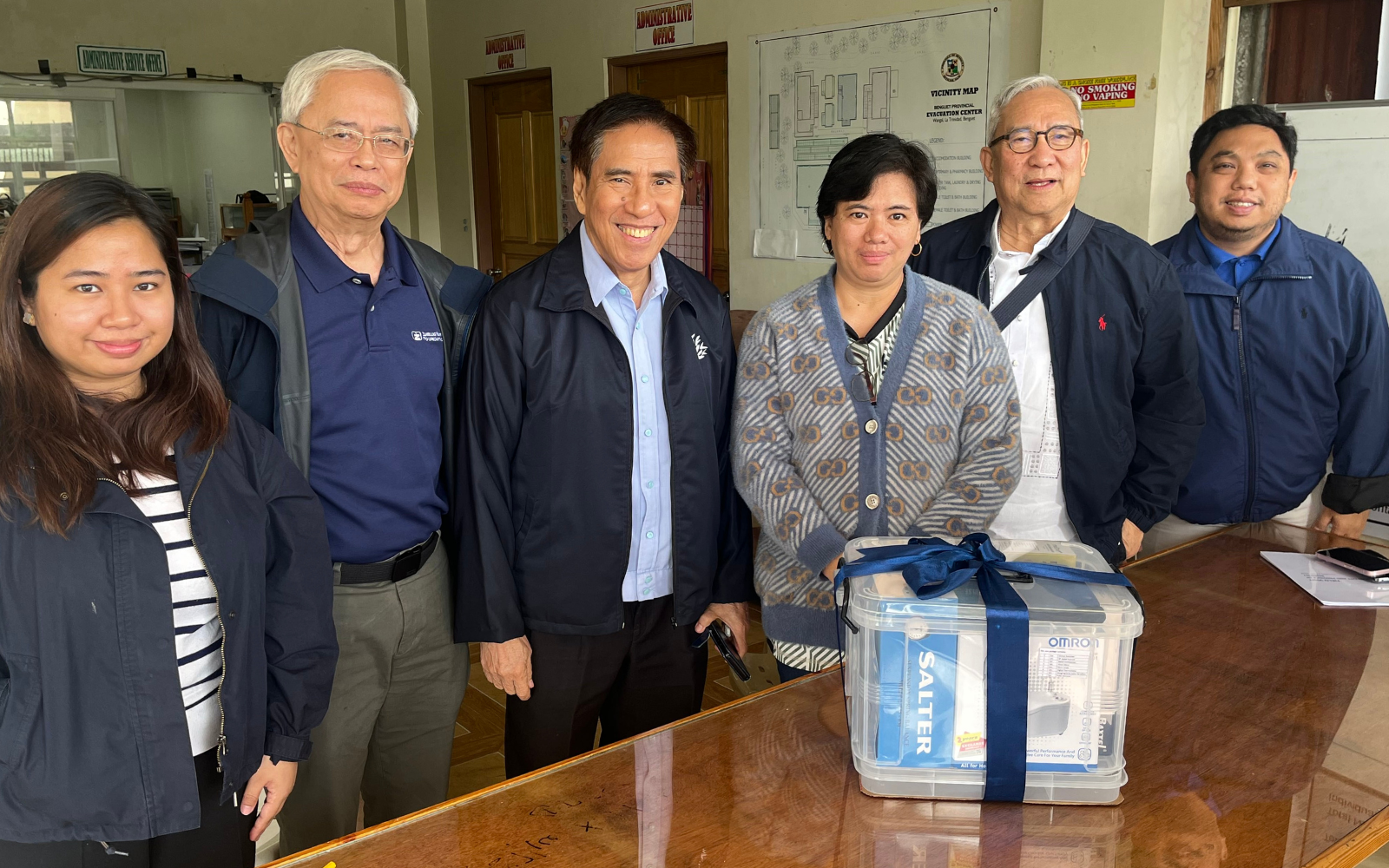Building a Healthier Benguet: Integrating Health Information, Financing, and Service Delivery to Achieving Universal Health Care
Insights from the Field

Author: Dr. Jenilyn Ann Dabu, ZFF LHS Program Manager
The visit by the Zuellig Family Foundation last October 23, 2024 yielded significant insights into the ongoing initiatives aimed at enhancing healthcare delivery in Benguet.
As one of the first four provinces designated as a PhilHealth Health Care Provider Network (HCPN) Demonstration Site, Benguet is focused on translating proof of concepts into practical applications. This initiative seeks to illustrate how comprehensive health system reforms and interconnected policies can effectively establish a functional patient referral system and gatekeeping mechanisms, all supported by pooled financial arrangements.
Dr. Meliarazon Dulay, the Provincial Health Officer II, emphasized that the successful implementation of these reforms hinges on three key elements: robust data on population health needs through an integrated health information system, effective public health financial management, and a seamless patient referral system that guarantees continuity of care. These components are essential in creating a healthcare environment that is responsive to the needs of the community.
The establishment of the HCPN Demonstration Site resonates strongly with the findings of The Lancet Global Health Commission on Financing Primary Health Care (2022).1 Both emphasize the critical importance of comprehensive health system reforms and the need for effective financing mechanisms to ensure equitable access to quality healthcare services.
The Lancet Commission highlights that primary health care (PHC) is fundamental to achieving Universal Health Care (UHC), yet many health systems, especially in low- and middle-income countries (LMICs), face challenges. These include insufficient public funding, inequitable access to services, and a reliance on out-of-pocket payments that can deter individuals from seeking necessary care. This mirrors the situation in Benguet, where the provincial health board is actively working to address these very issues through its HCPN initiative.
Integrating health information system
One of the key recommendations from The Lancet Commission is the need for robust data systems to inform health financing and service delivery decisions. In Benguet, Dr. Meliarazon Dulay stressed the importance of having good data on population health needs through an integrated health information system. This aligns with the assertion that effective financing arrangements must be underpinned by accurate data to allocate resources efficiently and equitably. The ability to collect and analyze health data allows for better identification of community needs, enabling healthcare providers to tailor services accordingly. This not only improves patient outcomes but also ensures that financial resources are directed where they are most needed, a principle strongly advocated by Dr. Dulay.

Effective Public Health Financial Management
With the devolved health functions, the HCPN demonstration initiatives are aimed at financial integration through operationalizing the Special Health Fund. Multiple funding flows, fragmented budgeting processes, and the need for decisions about the allocation of these funds between health and other sectors from municipal to provincial can be consolidated in local health funds. However, these priorities are prone to diverge between political and technical aspects, hence, key implementers like the provincial health officers, should have a strong grasp on budget formulation processes and budget execution. The former entails program budget, budget rules and allocations, and conditional grants. Whereas the latter covers policy on resource allocation formula, provider payments, contracting and monitoring, facility funding, and benefit specification.
As shared by Dr. Dulay, they are now in the process of finalizing next year’s financing health plans with the municipalities. Effective public health financial management reflects this need for sustainable funding models. By ensuring that financial resources are allocated strategically and protected as they flow through the system, Benguet aims to create a more resilient healthcare financing model that aligns with the principles outlined in the UHC law.
Seamless Patient Referral Systems
The establishment of a functional patient referral system is a crucial element emphasized in the HCPN initiative to achieve the goals of UHC. In Benguet, the objective is to create well-defined pathways for patient referrals among primary care facilities, rural health units (RHUs), Benguet General Hospital, and apex hospitals such as Baguio General Hospital and Medical Center, thereby forming a comprehensive healthcare provider network. This network may include private, public, or mixed healthcare providers and will be overseen by a managing board funded through pooled financial resources. The seamless referral process not only improves continuity of care but also helps identify methods to deliver healthcare services, goods, and interventions in a packaged manner.
The initiatives currently being implemented in Benguet demonstrate how local governments can align their healthcare reforms with a people-centered, multi-stakeholder approach. By prioritizing integrated data systems, effective financial management, streamlined referral processes, and equitable access to services, Benguet is making significant strides toward developing a more inclusive and efficient healthcare system. Achieving UHC requires not only sufficient funding but also a commitment to reforming existing systems to better serve the needs of all individuals within the community. The lessons learned from the experiences in Benguet can offer valuable insights for other provinces aiming to enhance their primary healthcare systems in line with UHC objectives.
—
1 Hanson, K., Brikci, N., Erlangga, D., Alebachew, A., De Allegri, M., Balabanova, D., … & Wurie, H. (2022). The Lancet Global Health Commission on financing primary health care: putting people at the centre. Lancet Global Health, 10(5), e715-e772.